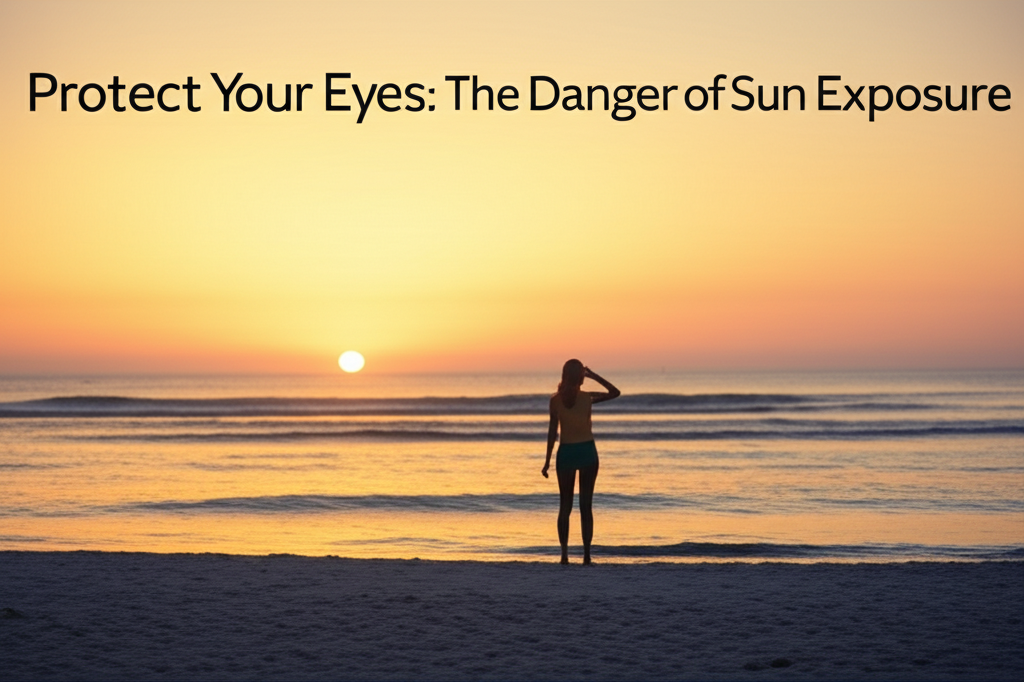
Protect Your Eyes: The Danger of Sun Exposure
The sun's rays are not only harmful to your skin; they can also cause serious damage to your eyes. Prolonged exposure to ultraviolet (UV) radiation from the sun can lead to a variety of eye problems, some of which can be permanent. Understanding the dangers and taking preventative measures is crucial for maintaining good eye health throughout your life.
Types of Eye Damage from Sun Exposure:
- Photokeratitis (Sunburn of the Eye): This is a painful condition similar to sunburn on your skin. It's caused by overexposure to UV radiation and results in inflammation of the cornea, the clear front part of your eye. Symptoms include pain, redness, blurry vision, and the feeling of something in your eye. While usually temporary, severe cases can cause permanent vision problems.
- Pterygium: This is a growth of tissue that forms on the conjunctiva (the membrane covering the white part of your eye) and can extend onto the cornea. It often appears as a fleshy, triangular growth and can affect vision if it grows large enough. Pterygia are more common in people with significant sun exposure.
- Cataracts: These are clouding of the eye's lens, which can lead to blurry or impaired vision. While aging is a primary cause, prolonged sun exposure significantly increases the risk of developing cataracts earlier in life.
- Macular Degeneration: This condition affects the macula, the central part of the retina responsible for sharp, central vision. UV radiation is a known risk factor for macular degeneration, increasing the chance of age-related macular degeneration (AMD) and potentially leading to vision loss.
- Photoaging: Just as the sun ages your skin, it also ages the skin around your eyes. This can lead to wrinkles, sagging, and discoloration of the eyelid skin.
Protecting Your Eyes from the Sun:
Fortunately, protecting your eyes from harmful UV radiation is relatively easy. Here are some essential steps you can take:
- Wear Sunglasses: This is the single most important step. Choose sunglasses that block 99-100% of both UVA and UVB rays. Look for labels that indicate UV protection.
- Wear a Wide-Brimed Hat: A hat with a wide brim provides additional shade for your eyes and the surrounding skin.
- Seek Shade: Limit your time in direct sunlight, especially during peak hours (10 am to 4 pm) when the sun's rays are strongest.
- Use UV-Protective Eye Care: Consider using specialized eye drops or ointments that provide UV protection. Consult with your eye doctor about options that are right for you.
- Regular Eye Exams: Schedule regular comprehensive eye exams with your ophthalmologist or optometrist. Early detection of eye problems is crucial for effective treatment.
Children and Sun Protection:
Children's eyes are especially vulnerable to UV damage. Protecting their eyes from an early age is crucial for preventing long-term problems. Ensure that children wear appropriate sunglasses and hats when outdoors and limit their exposure to direct sunlight.
Conclusion:
Protecting your eyes from the harmful effects of sun exposure is essential for maintaining good vision throughout your life. By taking simple preventative measures, such as wearing sunglasses and a hat, seeking shade, and undergoing regular eye examinations, you can significantly reduce your risk of developing sun-related eye problems.
Hashtags:#sun #eyes #uv #protection #sunglasses #health #vision #damage #ophthalmology #optometry #photokeratitis #pterygium #cataracts #maculardegeneration #photoaging #eyecare #sunsafety #simpleenglish Labels: sun,eyes,uv,protection,sunglasses,health,vision,damage,ophthalmology,optometry,photokeratitis,pterygium,cataracts,macular degeneration,photoaging,eye care,sun safety,simple english
No comments:
Post a Comment